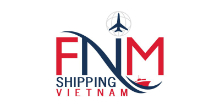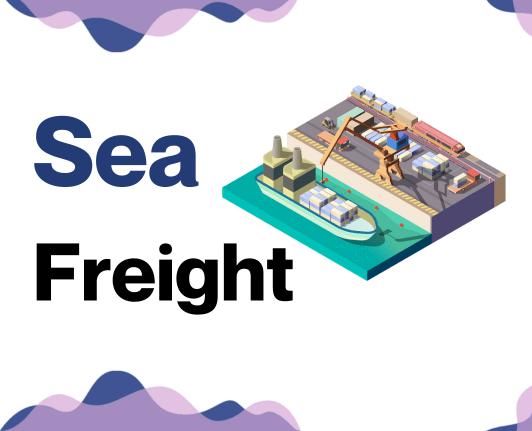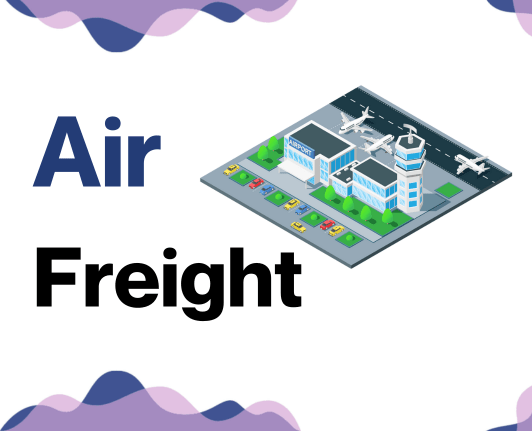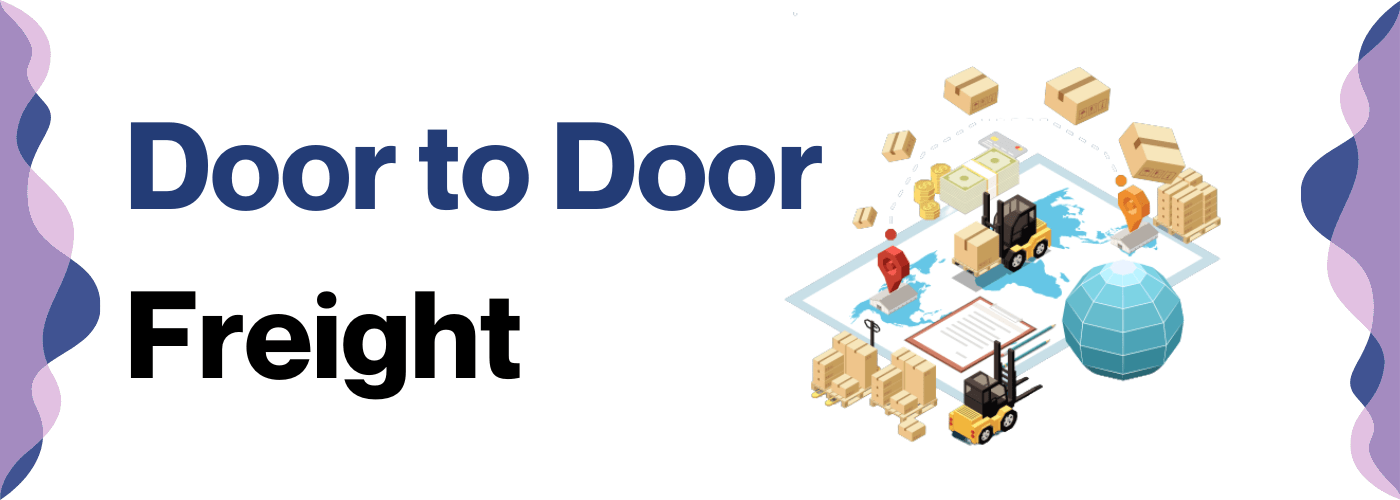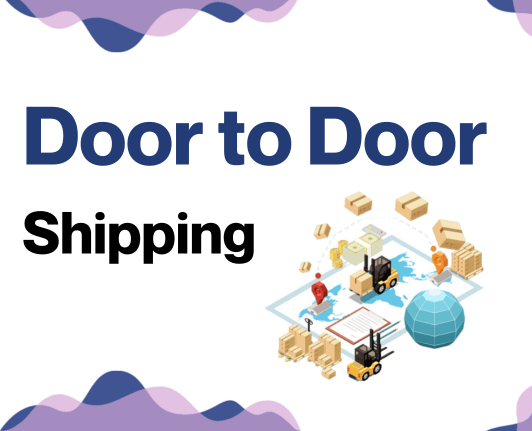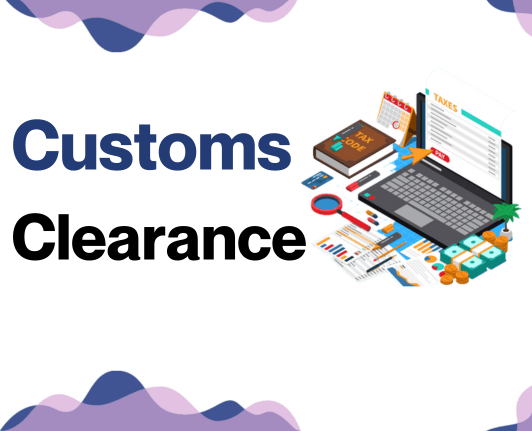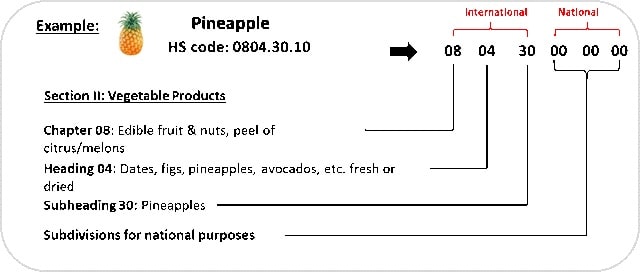You'll get tailored advice for businesses of all sizes and industries. If it still feels overwhelming, let FNM Vietnam handle it. Our expert services streamline each step of your shipping process, turning logistics challenges into smooth, successful outcomes for your business.
Which are the different modes of transportation between Vietnam and New Zealand?
The journey from Vietnam to New Zealand isn't a Sunday drive. We're talking about spanning continents and oceans – a colossal 8,900 km trek to be exact. Can a truck make it? Clearly not. Planes could zip over it, but at what cost? Ships could cruise, but can you afford the time? These hard-hitting questions narrow down our transport options. Selecting the right mode isn't just about distance - it's about balances and trade-offs. Let’s dive into this adventure together and explore your best shipping solutions between these two unique lands.
How can FNM Vietnam help?
Are you looking to send goods between Vietnam and New Zealand? FNM Vietnam streamlines this process for you, handling everything from transport organization to customs clearance. Our expertise is your peace of mind. To kick-start your seamless shipping journey, contact us for a free estimate within 24 hours. Need assistance? Our consultants are more than happy to chat at no cost to you.
FNM Vietnam Tip: Sea freight might be the best solution for you if:
- You're moving big loads or large items. Sea freight offers roomy, cost-effective solutions.
- Your shipment isn't time-critical. Ocean routes take longer but are often more reliable.
- Your supply chain links major ports, tapping into a broad network of sea lanes.
Sea freight between Vietnam and New Zealand
Welcome to the Ocean Shipping section of our Destination Guide! We're diving into the critical link between Vietnam and New Zealand, two nations flourishing through trade. Some of the busiest ports connecting their prime industrial centers include Ho Chi Minh City's Cat Lai port and New Zealand's Port of Auckland. With sea freight being a cost-effective route for high-volume goods, it's no surprise this slower shipping alternative is a popular choice.
Now, let's tackle the hurdles. Sending goods from Vietnam to New Zealand isn't always smooth sailing. It's like planning a big move—you're likely to face some mishaps along the way! Many businesses stumble because of insufficient knowledge of shipping best practices and the specific nuances of these two countries. Never fear, we're here to help make the journey easier. We've got a map of great tips and detailed specifications to put you on the right course in this part of our guide. Stick around to stay ahead of the tide!
Main shipping ports in Vietnam
Port of Hai Phong:
Location and Volume: Nestled in the Binh Hai area, the Port of Hai Phong is vital for North Vietnam’s economy, boasting a shipping volume over 40 million tons annually.
Key Trading Partners and Strategic Importance: It has strong connections with China and is a crucial hub for sea-river and sea-road services. Additionally, it serves as an important gateway for the transportation of goods between Northern provinces and the nearby capital, Hanoi.
Context for Businesses: If you're looking to expand your reach in the Asian market, particularly China, the strategic location of the Port of Hai Phong may furnish you with significant logistic advantages, given its convenient access to major transportation routes.
Port of Da Nang:
Location and Volume: Located in Central Vietnam, the Port of Da Nang is a critical juncture for international freight with a shipping volume of nearly 8 million tons per year.
Key Trading Partners and Strategic Importance: This port has a regional focus, with the majority of its trade involving ASEAN countries, Japan, and EU nations. Its strategic importance lies in its central location, which promotes the flow of commodities from Laos, Cambodia, and Thailand.
Context for Businesses: The Port of Da Nang provides a valuable opportunity if you're targeting the Southeast Asian and EU markets, largely due to its robust trade routes and central location.
Port of Qui Nhon:
Location and Volume: The Port of Qui Nhon is situated in Binh Dinh Province and hosts a medium shipping volume of approximately 7 million tons per annum.
Key Trading Partners and Strategic Importance: Primarily, it trades with Japan, China, Taiwan, and South Korea, functioning as an important conduit for transferring goods to the Central Highlands and provinces west of South Vietnam.
Context for Businesses: If you’re planning to strengthen your business foothold in East Asia and Central Vietnam, the Port of Qui Nhon, due to its flexible transportation connections, would likely serve as a key logistic hub.
Port of Nha Trang
Location and Volume: Located in Khanh Hoa, the Port of Nha Trang is an important seaport with a shipping volume of just under 5 million tons annually.
Key Trading Partners and Strategic Importance: Its clientele primarily includes countries in Southeast Asia and provides a direct route to the sea for Central Highlands businesses.
Context for Businesses: Are you focusing on penetrating Southeast Asian markets? The Port of Nha Trang could become an integral part of your shipping strategy due to its strong links to Southeast Asian countries.
Port of Vung Tau:
Location and Volume: Situated in the southeast of Vietnam, the Port of Vung Tau is one of the country's busiest ports with a shipping volume of over 100 million tons yearly.
Key Trading Partners and Strategic Importance: Central to its trade are the US, EU, China, and Japan. It hosts a significant part of the export processing zone and is a major terminal for crude oil.
Context for Businesses: If you're looking for a well-connected hub, particularly for bulk and crude oil shipping, the Port of Vung Tau could indeed be your strategic link given its import/export specialization and exceptional volume handling.
Port of Saigon:
Location and Volume: Found in Ho Chi Minh City, the Port of Saigon is Vietnam’s busiest seaport with a shipping volume of over 3.5 million TEUs.
Key Trading Partners and Strategic Importance: It services a multitude of global trading partners, primarily countries in East Asia, the EU, and the Americas. It’s a strategic pivot for commodities flowing in and out of Ho Chi Minh City, Vietnam’s economic focal point.
Context for Businesses: Where global reach and high capacity is your prime requirement, the Port of Saigon provides an extensive network and high shipment volume that could serve as the lifeline for your logistics strategy.
Main shipping ports in New Zealand
Port of Auckland:
Location and Volume: Strategically located in the heart of New Zealand’s largest city, Auckland, this port is central to various trade activities in the region. It processes over 1.7 million TEU Twenty-foot Equivalent Units annually, making it the busiest port in New Zealand.
Key Trading Partners and Strategic Importance: The Port of Auckland's key trading partners include China, Australia, and the USA. Its strategic importance as a platform for global commerce can't be overstated. Notably, it features a state-of-the-art automated container terminal.
Context for Businesses: If you’re looking to establish a steady trade with the Asia-Pacific region, the Port of Auckland, with its impressive logistical prowess and customs efficiency, can potentially streamline your plans significantly.
Port of Tauranga:
Location and Volume: Based in the Bay of Plenty region, the Port of Tauranga is a natural harbor boasting a large volume capacity, handling over 1.2 million TEU annually.
Key Trading Partners and Strategic Importance: Major trading collaborations involve China, Australia, and other Pacific Island countries. Tauranga Port's long-term strategy includes investments in infrastructure, which exudes potential for further growth.
Context for Businesses: For businesses looking for an integrated port solution with excellent roadway and railway connections, the Port of Tauranga may support your shipping and logistics strategy well.
Port of Lyttelton:
Location and Volume: Situated in the South Island's Canterbury region, the Port of Lyttelton generally facilitates around 400,000 TEU each year.
Key Trading Partners and Strategic Importance: It holds vital trade relations with Australia, China, and the USA. Being the South Island's primary goods receiver, its strategic importance can be chiefly associated with the import of essential goods.
Context for Businesses: If you’re importing into the South Island or shipping dry bulk like grain or coal, Lyttelton Port’s comprehensive port and logistics services might cater aptly to your business requirements.
Port of Napier:
Location and Volume: Located in Napier on New Zealand's eastern North Island, the port oversees approximately 260,000 TEU every year.
Key Trading Partners and Strategic Importance: Napier Port's trading partners encompass several countries, with key partnerships involving China, India, and Australia. Primarily, it specializes in exporting bulk wine from its region.
Context for Businesses: For businesses, primarily in the wine sector, looking at exporting to Asian and Australian markets, the Port of Napier's wine shipment expertise could prove pivotal in maximizing profits and maintaining the quality of the goods.
Port of Nelson:
Location and Volume: Nestled in the geographically advantageous location of Nelson in the South Island, this port handles close to 100,000 TEU yearly.
Key Trading Partners and Strategic Importance: The port significantly deals with Australia, the USA, and the Asia-Pacific region. Alongside, it holds a distinct strategic importance for the shipment of forestry and seafood products.
Context for Businesses: If your business primarily deals with exporting forestry or seafood products, the Port of Nelson might perfectly align with your trade objectives, thanks to its specialist handling of these commodities and proximity to key markets.
Port of Whangarei:
Location and Volume: Situated up in the Northland region, the Port of Whangarei handles a modest volume equivalent to about 50,000 TEU yearly.
Key Trading Partners and Strategic Importance: Key trading partners include China, Japan, and Australia, majorly for products like timber and cement.
Context for Businesses: The Port of Whangarei may be an effective partner for businesses venturing into the timber and cement markets of Asia-Pacific, due to its freight handling competence and strategic trade relations.
Should I choose FCL or LCL when shipping between Vietnam and New Zealand?
Choosing between Full Container Load (FCL) or Less than Container Load (LCL), also called consolidation, for your sea freight from Vietnam to New Zealand can feel like a high-stakes decision. It's more than just a choice; it's a strategic move in your supply chain that could impact on the cost, delivery timeframe, and overall success of your shipment. In this quick guide, we'll unravel the nuances of both options, empowering you to decide wisely, avoid any hidden snags, and align your decision with your specific business needs. Get ready to seize control of your shipping journey!
LCL: Less than Container Load
Definition: Less than Container Load (LCL) shipping involves sharing container space with other businesses' goods, hence the term 'consolidation.' It's a viable method of shipping smaller quantities of goods.
When to Use: LCL freight is advantageous for shipments with a volume less than 13 to 15 CBM. It offers better flexibility and is cost-effective for low volumes. Price tends to rise linearly with the increase of goods, making it ideal for smaller shipments.
Example: Assume you're a business owner specializing in handmade bamboo products in Vietnam, looking to expand your reach in New Zealand. Your order is just 10 CBM, meaning it wouldn't fill an entire container. Here's where an LCL shipment fits perfectly - saving you money by only paying for the space you need.
Cost Implications: With LCL, you only pay for your portion of the container. However, remember that each LCL shipping quote includes additional fees such as handling and consolidation charges at both origin and destination ports. It might be costlier per CBM compared to Full Container Load (FCL), but for smaller volumes, LCL can be a more economical choice.
FCL: Full Container Load
Definition: FCL, or Full Container Load, refers to fcl shipping where a single container is used exclusively for one consignee's cargo, from loading at origin to offloading at destination.
When to Use: FCL is your go-to option when your cargo volume exceeds 13-15 cubic meters (CBM). It's not only because the fcl shipping quote is more cost-effective for high volume shipments, but also due to safety considerations as the fcl container remains sealed throughout the journey.
Example: Suppose you're a furniture company transporting 17 CBM of chairs from Vietnam to New Zealand. Since this exceeds the 15 CBM threshold, FCL with a 20'ft container or 40'ft container depending on your cargo size, offers a cost-efficient and secure shipping solution.
Cost Implications: FCL could bring substantial cost savings for large shipments. While LCL might seem cheaper initially, the cost per unit in an FCL shipment is significantly lower when dealing with larger cargo volumes. Furthermore, with FCL, there are likely fewer logistical hassles and hidden fees, making your budgeting more predictable.
Say goodbye to shipping headaches!
Say goodbye to complex shipping decisions with FNM Vietnam. Our expertise in freight forwarding simplifies cargo shipment, relieving businesses from daunting tasks. Our ocean freight mavericks offer tailored solutions, weighing crucial factors such as cost, time, and the volume and nature of your goods. The choice between consolidation and full containers doesn't have to be stressful. Let's make informed decisions together. Click here for your free shipping estimation, and let's navigate the seas of international trade smoothly.
How long does sea freight take between Vietnam and New Zealand?
When shipping goods between Vietnam and New Zealand via sea freight, the average transit time tends to range from 16-22 days. However, it's vital to remember that these transit times can vary based on factors such as the specific ports in use, the weight of the cargo, and the nature of the goods. Therefore, to receive a precise estimate of transit time according to your unique needs, we strongly recommend reaching out to a trusted freight forwarder like FNM Vietnam for a tailored quote.
| Ports in Vietnam | Ports in New Zealand | Average Shipping Time (Days) |
| Port of Hai Phong | Port of Tauranga | 22 |
| Port of Da Nang | Port of Auckland | 21 |
| Port of Ho Chi Minh City | Port of Lyttelton | 21 |
| | Port of Quy Nhon | Port of Napier | 21 |
*Please note that times are averages and can vary based on several variables including origin, destination, and the nature of the goods being transported.
How much does it cost to ship a container between Vietnam and New Zealand?
Understanding ocean freight rates between Vietnam and New Zealand can be a challenge due to their variability. Factors such as Point of Loading and Destination, the carrier in use, the nature of goods, and monthly market fluctuations all play crucial roles. Although we can't provide a concrete shipping cost here, it generally ranges widely per CBM. Despite these uncertainties, rest assured our experienced shipping specialists are ready to navigate these complexities with you. Each quote is meticulously tailored to your unique needs, ensuring you receive the best possible rates. We move beyond the numbers, focusing on a solution that best fits your business.
Special transportation services
Out of Gauge (OOG) Container
Definition: Out of Gauge (OOG) Containers are specifically designed for cargo that doesn't fit into standard shipping containers due to size or weight. These might include large machinery pieces or oversized equipment.
Suitable for: Businesses with oversized goods or those too heavy for standard containers.
Examples: Construction equipment, large vehicles, and turbine blades are examples of goods often transported using OOG containers.
Why it might be the best choice for you: With the flexibility of accommodating Out of gauge cargo, your business will not be limited by dimensions or weight, allowing seamless shipping of unique items.
Break Bulk
Definition: Break Bulk involves shipping goods individually or in crates, barrels or bags, as opposed to in a container. It's a method often used for bulky, heavy, or awkwardly shaped items.
Suitable for: Businesses that deal with large items unable to fit into standard containers or on pallets.
Examples: Machinery parts, timber, paper pulp, steel products, and construction equipment would typically be shipped as break bulk.
Why it might be the best choice for you: If your cargo is too large or oddly shaped to fit into a traditional container, considering break bulk as an option will ensure safe, efficient transport.
Dry Bulk
Definition: Dry Bulk is the transportation of homogenous, unpackaged, and loose cargo loaded directly into the vessel's hold.
Suitable for: Business looking to transport large volumes of goods like coal, iron ore, grain, and other loose commodities.
Examples: Commodities such as cereals, grains, coals, and minerals are suitable for dry bulk shipping.
Why it might be the best choice for you: If your business deals with large types of loose cargo with no need for packaging, Dry Bulk shipping is an economical, efficient solution.
Roll-on/Roll-off (Ro-Ro)
Definition: Roll-on/Roll-off (Ro-Ro) shipping involves using vessels designed to carry wheeled cargo, such as cars, trucks, semi-trailers, trailers, or railroad cars that are driven on and off the ship on their own wheels.
Suitable for: Businesses that ship vehicles, trailers, or heavy-duty equipment that can be mounted on wheels.
Examples: Cars, buses, trucks, semi-trailers, and mobile cranes can be transported using a ro-ro vessel.
Why it might be the best choice for you: If you have wheeled cargo ready to be driven on and off the vessel, Ro-Ro shipping is often the most efficient and cost-effective method.
Reefer Containers
Definition: Reefer Containers are refrigerated shipping containers for goods that need temperature control during transportation.
Suitable for: Businesses shipping perishable goods requiring a sustained temperature.
Examples: Food items such as fruits, vegetables, dairy, and meat or pharmaceutical products are typically transported in reefer containers.
Why it might be the best choice for you: If you are in a business that requires the transport of temperature-sensitive goods, a reefer container can ensure the product's integrity from departure to destination.
At FNM Vietnam, we offer all these shipping options and more. Understanding your business's specific needs is our priority, so we invite you to contact us for a free shipping quote in less than 24h. Let us tailor the most efficient, secure, and cost-effective sea freight solution for your business.
FNM Vietnam Tip: Air freight might be the best solution for you if:
- You're on a tight schedule. Air freight delivers speed unmatched by other modes.
- Your cargo is under 2 CBM, a good fit for air's smaller capacity.
- Your destination is off the usual routes, making air's global network a key asset.
Air freight between Vietnam and New Zealand
Moving high-value goods like tech components between Vietnam and New Zealand? You'll want to take flight with air freight. This method is speedy, reliable, and cost-effective for small shipments. Consider that pricey but lightweight smart-device your company has been developing: shipping it by air gets it to your buyer faster without breaking the bank. But beware, the skies of air freight aren't all clear. Many companies stumble when underestimating costs like inaccurate weight calculations, finding themselves caught in a costly storm. In this guide, we'll be your 'weather forecast', helping you avoid those common and costly air freight blunders.
Air Cargo vs Express Air Freight: How should I ship?
Choosing the best way to move your goods between Vietnam and New Zealand? It's crucial to comprehend Air Cargo and Express Freight. Picture Air Cargo as a commercial airline carrying both passengers and your business's goods, while Express Air Freight is more of a private jet escorting your shipment exclusively. Choosing the right one could be a game-changer for your operation.
Should I choose Air Cargo between Vietnam and New Zealand?
If your business requires quick delivery despite a higher cost, airlines like Vietnam Airlines and Air New Zealand are reliable options for freight between Vietnam and New Zealand. Remember though, longer transit times may occur due to airlines' fixed schedules. Air cargo becomes more attractive with 100/150 kg (220/330 lbs) of cargo, offeri efficiency and value for your money. So, consider if air shipping suits your budget and urgency needs. This could be the shipping solution you've been looking for.
Should I choose Express Air Freight between Vietnam and New Zealand?
Express air freight, offered by courier giants like FedEx, UPS, or DHL, is a quick and ultra-reliable shipping option. Shipping with these firms means your goods are carried on dedicated cargo planes, no passengers. This service shines when shipping smaller goods - under 1 CBM or between 100/150 kg (220/330 lbs). If your cargo fits the bill, express air freight between Vietnam and New Zealand might be just the ticket. Think about it - a super-fast, stress-free service that ensures your shipment lands in New Zealand in record time. Really, it's the epitome of convenience.
Main international airports in Vietnam
Tan Son Nhat International Airport
Cargo Volume: Handling over 2.8 million tons of cargo annually, this airport is the busiest in terms of freight in the country.
Key Trading Partners: China, South Korea, and the United States are among the airport's primary trade partners.
Strategic Importance: Its location in Ho Chi Minh City, Vietnam's biggest economic hub, and its extensive connections to over 50 countries make it strategically important.
Notable Features: It features a 100,000 square meter cargo terminal equipped to handle a variety of freight services such as international mail, perishables, and hazardous goods.
For Your Business: Given its high cargo turnover and established trade links, you might consider this airport to expedite delivery of high-volume or priority shipments.
Noi Bai International Airport
Cargo Volume: Annually, it processes about 1.5 million tons of freight, ranking it second busiest in terms of cargo in Vietnam.
Key Trading Partners: Its main trading partners include Japan, Singapore and the US.
Strategic Importance: Situated near Hanoi, it acts as a crucial gateway for businesses aiming to reach North Vietnam's markets.
Notable Features: The airport has a dedicated Cargo Terminal which can handle all types of cargo including heavy and outsized goods.
For Your Business: If your trade operations are targeted towards Northern Vietnam or neighboring regions, this airport could be a key component of your shipping strategy.
Da Nang International Airport
Cargo Volume: With a capacity of handling over 100,000 tons of cargo annually, this is the third largest cargo airport in Vietnam.
Key Trading Partners: Major trade partners include South Korea, China and Japan.
Strategic Importance: Its location in Central Vietnam, combined with its access to Eastern Sea freight routes, enhances its strategic value.
Notable Features: Besides classic freight services, it also offers logistics, warehousing, and transshipment services.
For Your Business: Its balance of cargo handling capability and location might be ideal if your business caters to markets across Central Vietnam or regions along the Eastern Sea.
Main international airports in New Zealand
Auckland Airport
Cargo Volume: Over 2 million tonnes of cargo pass through annually.
Key Trading Partners: Majorly with Australia, Asia, and the United States.
Strategic Importance: As New Zealand's largest and busiest airport, it forms a critical link to ensure the smooth flow of goods both nationally and internationally.
Notable Features: Contains extensive freight facilities and cargo services, integrating efficiently with road transport networks.
For Your Business: If your business heavily leans on trading with the above-mentioned regions or requires robust infrastructure, Auckland Airport may be the best fit.
Christchurch Airport
Cargo Volume: Handles around 30% of New Zealand's air cargo.
Key Trading Partners: Primarily Australia, Dubai and eastern Asia.
Strategic Importance: Situated on the South Island, it facilitates reach to this segment of the country and to Antarctic expeditions.
Notable Features: Offers major cargo handling facilities and pioneered the nation’s first dedicated freighter service to Asia. It also serves as the Southern Hemisphere's gateway to Antarctica.
For Your Business: The airport’s strong links to Australia and Asia coupled with its unique Antarctic accessibility make it an attractive choice if these elements align with your business demands.
Wellington International Airport
Cargo Volume: Annually processes thousands of tonnes of cargo.
Key Trading Partners: Predominantly Australia, Fiji, and Singapore.
Strategic Importance: Its location on the North Island's southern tip allows for quick cargo distribution across both main islands.
Notable Features: Smaller than Auckland and Christchurch, but still features impressive cargo handling facilities.
For Your Business: If your business seeks a strategic location in New Zealand that can readily distribute goods across the country, Wellington International Airport should be considered.
Queenstown Airport
Cargo Volume: Fewer cargo volumes, exact figures not publicly available.
Key Trading Partners: Majorly Australia and includes domestic cargo transport.
Strategic Importance: It’s the gateway to the scenic, tourism-rich regions of Queenstown and Central Otago.
Notable Features: Seasonally adjusts schedules to accommodate peak tourism periods which could affect cargo operations.
For Your Business: If your business is linked to tourism or requires smaller, more manageable cargo volumes and regional distribution, Queenstown Airport can be a strategic choice.
Hamilton Airport
Cargo Volume: Handles smaller cargo volumes, with exact figures not listed.
Key Trading Partners: Mainly domestic and Australia.
Strategic Importance: Its central location in the North Island makes it prime for the transportation of goods domestically.
Notable Features: Known for ease of operations and speed of transfers. Limited international connectivity.
For Your Business: If your business prioritizes domestic transportation and speed, Hamilton Airport’s central location and efficiency could make it an ideal choice.
How long does air freight take between Vietnam and New Zealand?
Shipping goods between Vietnam and New Zealand by air freight typically takes between 6 to 8 days. However, this transit time can vary as it relies heavily on factors such as the specific airports used, the overall weight of the goods being shipped, and the nature of the goods themselves. If you're looking for precise transit times, it would be beneficial to consult with an experienced freight forwarder, such as FNM Vietnam.
How much does it cost to ship a parcel between Vietnam and New Zealand with air freight?
Air freight costs between Vietnam and New Zealand can vary widely, averaging between $3 to $7 per kg. The broad range accounts for diverse factors, such as distance from airports of departure and arrival, dimensions and weights of your goods, and their specific nature. As such, providing a one-size-fits-all rate is challenging. At our company, we're dedicated to quoting optimal rates tailored to your unique shipment needs, evaluated on a case-by-case basis. Reach out to us today and receive a personalised, no-obligation quote in less than 24 hours.
What is the difference between volumetric and gross weight?
When shipping products internationally, understanding weight definitions is critical in accurately calculating costs. Starting with gross weight, this refers to the total weight of your goods including packaging and pallet. It's easily determined by placing your shipment on a scale.
For example, if your packaged goods weigh 75kg (165 lbs), that's the gross weight.
In contrast, volumetric weight involves measuring the space your package occupies in comparison to its actual weight. It's a theoretical weight that is used in air cargo shipping, including express services. It's calculated using the formula: Length (m) x Width (m) x Height (m) divided by a volumetric factor, which is conventionally 5000 for Air Cargo and 6000 for express services.
Consider your shipment is a box with dimensions 1.2m x 1.3m x 1.1m and weighs 75kg. It's volumetric weight for Air Cargo would be 1.2 x 1.3 x 1.1 / 5000, which equals 0.34 cubic meters or approximately 340kg (750 lbs). For Express Air Freight services, the calculation would be 1.2 x 1.3 x 1.1 / 6000, roughly equating to 283kg (624 lbs).
So, why are these calculations so crucial? It comes down to cost. In air freight, charges are based on the greater of the two weights - gross weight or volumetric weight. As a shipper, this helps you to optimize packaging and reduce unexpected expenses.
FNM Vietnam Tip: Door to Door might be the best solution for you if:
- You seek hassle-free shipping. Door-to-door manages the entire process for you.
- You like one go-to contact. A dedicated agent oversees your door-to-door shipment.
- You aim to limit cargo handling. Fewer transitions mean less risk of damage or loss.
Door to door between Vietnam and New Zealand
Uncover the convenience of Door to Door shipping; an international shipping solution seamlessly connecting Vietnam with New Zealand. It's an all-inclusive package, handling everything from pickup to delivery, making your shipping experience hassle-free. And the best part? It's time and cost-efficient, especially suited for our route under discussion. So, are you excited to learn about it? Let's dive in!
Overview – Door to Door
Shipping from Vietnam to New Zealand? Opt for our door-to-door service! It's straightforward, efficient, and removes the hassles of complex procedures. While it may cost a little more, it eliminates the headaches from customs clearance and administrative formalities. FNM Vietnam's clients often choose it as the far superior and stress-free option.
Despite the challenges of international shipping - trust us, we've seen many - a door-to-door strategy puts you ahead of the game. It's the one-stop solution you've been waiting for. Ready to ship seamlessly? We've got the expertise to guide you. Welcome to worry-free shipping! Will it be your first choice too?
Why should I use a Door to Door service between Vietnam and New Zealand?
Alright, picture this: you've just perfected your world-famous Vietnamese Pho recipe and now, the Kiwis on the other side of the Pacific are lining up to get a taste. But, how do you ensure your secret Pho spice gets to New Zealand without breaking a sweat or breaking the bank? Enter Door to Door service.
1. Say Goodbye to Logistics Headaches: With Door to Door service, you can bid your logistics woes goodbye. Right from picking up the goods from your doorstep in Vietnam, to taking care of freight transportation, customs, and finally delivering at the customer's door in New Zealand; everything is handled by adept professionals.
2. Timely Deliveries for Urgent Shipments: Door to Door service is the Usain Bolt of international freight forwarding. It prides itself in making speedy, efficient deliveries, meaning your urgent shipments always meet their deadlines.
3. Extra care for your Extra-special cargo: Got complex cargo? No worries. With Door to Door service, you’ll get specialized care and handling, ensuring your valuable goods are treated like royalty.
4. Convenience is King: When it's trucking or warehouse storage, you sit back and relax. Door to Door service means you don’t need to stress about arranging separate transport for getting your goods to and from the ports.
5. Predictable Pricing: Finally, no hidden costs or last-minute surprises. With Door to Door service, you pay a single price that covers all, making your financial planning as smooth as your New Zealand-bound shipment.
Now, whether you’re shipping the secret Pho spice or the latest tech product, Door to Door service between Vietnam and New Zealand has got you covered!
FNM Vietnam – Door to Door specialist between Vietnam and New Zealand
Experience hassle-free, door-to-door shipping between Vietnam and New Zealand with FNM Vietnam. We master the art of logistics, taking care of everything from packing, transportation, customs clearance, and choice of shipping method. Our dedicated Account Executives are standing by to route your cargo smoothly and efficiently. Reach out now for a free, no-obligation estimate in under 24 hours, or speak directly with our consultants for personalized guidance. With FNM, you don't have to lift a finger - we've got it covered!
Customs clearance in New Zealand for goods imported from Vietnam
Navigating through the maze of customs clearance when importing goods from Vietnam to New Zealand is no easy feat. It's a labyrinth of duties, taxes, quotas, and licenses – each with its potential pitfalls like surprising fees and the risk of cargo getting stuck. Ignorance isn't bliss here; a grasp on these complexities can save you time and money. In the following sections, we'll eliminate the guesswork, guiding you through this intricate pathway.
Unsure how to handle it alone? FNM Vietnam can help, able to oversee the process for any goods globally. Need an estimate for your budgeting? Just touch base with our team, providing the origin of your goods, their value, and the HS Code - these three elements are necessary for an estimation. Now, let's demystify the voyage from Vietnam to New Zealand.
How to calculate duties & taxes when importing from Vietnam to New Zealand?
Venturing into the world of international trade means navigating through a labyrinth of duties and taxes. Their application is reliant on numerous factors such as the origin country of the goods, the applicable nomenclature using the Harmonized System Code (HS Code), the customs value derived from the transaction value of the goods, the applicable tariff rate, and any additional taxes and fees.
Ever wondered how these pieces fit together? Here's a clue - it begins with identifying the country where your goods are produced or manufactured. This critical first step is often overlooked but plays a major role in working out the duties and taxes your business will owe for importing goods from Vietnam to New Zealand. Get this right from the start and you're well on your way to simplified, hassle-free shipping!
Step 1 - Identify the Country of Origin
First off, knowing your goods' Country of Origin is a key initial step. Here's why:
1) Trade Agreements: Vietnam and New Zealand are part of the Comprehensive and Progressive Agreement for Trans-Pacific Partnership (CPTPP), pegging import duties lower than non-member states.
2) Valuation: Customs authorities verify the goods' value, which varies by Country of Origin.
3) Control Measures: Certain goods from specific countries face tighter measures.
4) Restrictions/Prohibitions: A few items might be off-limits or under restrictions from Vietnam.
5) Documentation: You’ll need a Certificate of Origin for duty concessions under the CPTPP agreement.
Now, let's look at real-world business implications. Suppose you're a fashion retailer in Auckland bringing in some cool cotton tees from Vietnam. With Vietnam as part of CPTPP, you enjoy lower import taxes. Remember, the New Zealand Customs authorities might impose stricter control measures on textile items. Plan ahead to avoid untimely customs clearances or penalties.
And don't forget about possible restrictions - always check whether your goods are permissible for import from Vietnam. Finally, ensure you have your Certificate of Origin ready to grab those CPTPP-based tax benefits. Getting the HS code is your subsequent task, but this first step is crucial to sort out your duties and taxes effectively.
Step 2 - Find the HS Code of your product
The Harmonized System (HS) Code is a standardized method of classifying traded products. Designed and managed by the World Customs Organization (WCO), it forms the basis for customs tariffs and statistics globally. This internationally recognized system allows your product to be identified and taxed appropriately, making it a crucial part of the shipping process.
You might wonder where you can find this HS Code. More often than not, your supplier will be the most reliable source since they're intimately familiar with the products they're exporting and the corresponding regulations.
However, if directly asking the supplier for the HS code is not possible, don't worry. Below are simple step-by-step instructions to find it on your own:
1. Visit the Harmonized Tariff Schedule website.
2. Type the name of your product into the search bar.
3. Check the 'Heading/Subheading' column in the results, where you'll find the HS code for your product.
Please keep in mind, accuracy when selecting your product's HS Code is absolutely vital. An incorrect code could lead to shipping delays and potentially hefty fines.
Here's an infographic showing you how to read an HS code. It's designed to make the understanding process as easy as possible for you. Remember, a smooth shipping experience starts with getting these details right.
Step 3 - Calculate the Customs Value
You're probably asking yourself, what is exactly is a 'Customs Value'? Most importantly, how does it differ from the actual value of your products? The Customs Value doesn't just consider the worth of your goods - it delves deeper into the complete cost from Vietnam to New Zealand. Essentially, it's the CIF value, which is the price of goods on the invoice, plus the cost of international shipping, and the insurance cost.
For instance, if you're importing electronic components priced at $10,000 USD, shipped for $1,000 USD, and insured for $200 USD, your Customs Value would be $11,200 USD. This value is pivotal in determining the amount of customs duty you'll need to pay. Remember, the Customs Value is all about the total cost of getting your goods from manufacturer to destination, rather than only the product price. It's a comprehensive look at your international shipping reality.
Step 4 - Figure out the applicable Import Tariff
An import tariff is essentially a tax that's imposed on imported goods. In New Zealand, you'll typically deal with the Most-Favored-Nation (MFN) tariff, where there's a uniform rate for all international trade partners (except Free Trade Agreement partners).
To identify the tariff for your product, New Zealand Customs provides a handy online tool; the Working Tariff Document of New Zealand. Just follow these simple steps:
1. Visit the online Working Tariff Document of New Zealand.
2. Enter the Harmonized System (HS) code for your product, that you identified back in Step 2.
3. After submitting, you'll get details about the tariff applicable to your product category and originating country.
Now, let's illustrate this with an example. Say you're importing leather belts with an HS code of 420330, from Vietnam. The tariff might be listed as 5%. Assume your Cost, Insurance, and Freight (CIF) costs amount to USD 10,000. To calculate the import duties, we apply the tariff to the CIF value:
Import Duties = CIF Value x Import Tariff
Import Duties = USD 10,000 x 5% = USD 500
So the import tariff for this shipment of leather belts would be USD 500. That's essentially how tariffs and import duties work. Note, this is a simplified example and actual costs may vary.
Step 5 - Consider other Import Duties and Taxes
When importing goods from Vietnam to New Zealand, besides standard tariff rates, there may be additional taxes depending on the product and its origin. Excise duty can apply to specific goods such as tobacco and alcohol. In case foreign goods are sold far below their normal value, an anti-dumping tax may be levied to protect New Zealand's domestic industry.
Let's consider a hypothetical scenario to illustrate this point: You're importing wine worth $10,000. Excise duty for wine is roughly $2.23 per litre (although rates may vary). If you have 1000 litres, that's around $2230.
Finally, New Zealand charges Value Added Tax (VAT), referred to as Goods and Services Tax (GST), which is applied to the cost of the goods, the insurance, the freight and any other import duty costs. This is currently 15%.
Continuing our example, if the shipment of wine is $10,000, plus $2230 of excise duty and let's say $500 in freight, the GST would be calculated as 15% of ($10,000+$2230+$500), which is approximately $1945.
Remember, these numbers are purely examples - actual rates can vary. An experienced forwarder can help you navigate these costs and procedures. Above all, it is essential to take these potential extra costs into account when exporting goods to New Zealand.
Step 6 - Calculate the Customs Duties
Calculating customs duties on your goods imported from Vietnam into New Zealand can be complex but vital. The Customs Duty rate is calculated as a percentage of the customs value of your goods - the cost of the items including transport and insurance.
For example, if your cargo is worth $100,000 and the duty rate is 5%, the Customs Duty will be $5,000.
Now, introduce the Value Added Tax (VAT). VAT is calculated on the total of the customs value, plus the duty. So if you have $100,000 shipment with a 5% duty ($5,000), and the New Zealand VAT rate is 15%, then the VAT payable is $15,750.
Anti-dumping taxes and Excise Duty complicate matters more. For a cargo worth $100,000, with 5% Customs Duty, 15% VAT, a 10% Anti-Dumping Tax, and a $2,000 Excise Duty, the total dues would be $34,250.
It's a layered process requiring accurate calculations to avoid added expenses. This is where FNM Vietnam surpasses expectations. We specialize in efficient customs clearance procedures worldwide and ensure you are not overcharged. Reach out and get a free quote within 24 hours to facilitate your import-export operations smoothly.
Does FNM Vietnam charge customs fees?
As a customs broker, FNM Vietnam assists with the technicalities of shipping goods, but it doesn't levy customs duties — these are paid directly to the government. Any fees from us cover our services for managing the clearance processes, not governmental costs. To offer full transparency, we provide documentation from the customs office, showing you're only covering mandated charges. It's much like paying a guide to navigate a complex city. You're not paying for the city itself, just the guidance to smoothly maneuver through. Let's unpack this further in our guide.
Contact Details for Customs Authorities
Vietnam Customs
Official name: General Department of Vietnam Customs
Official website: https://www.customs.gov.vn/
New Zealand Customs
Official name: New Zealand Customs Service
Official website: https://www.customs.govt.nz/
Required documents for customs clearance
Sweating over heaps of paperwork for customs clearance? Don't fret! Let's dive into the must-have documents, like bill of lading, packing list, certificate of origin, and documents of conformity (CE standard). These are your essential keys to a smooth and hassle-free shipping experience.
Bill of Lading
As a vital document for customs clearance, the Bill of Lading signifies the transfer of ownership for goods shipped from Vietnam to New Zealand. But it's not just a certificate - think of it as your cargo's passport during its journey. It's especially crucial if you're leveraging sea freight, but for air cargo, an analogous document would be the Air Waybill (AWB). Consider opting for a 'telex' or electronic release of this document - it essentially greases the wheels of the customs process, being faster and more secure. Introducing the telex release in your logistics operations could be a game-changer, helping you to avoid snags and keep your timetables on track. Make sure it's accurate, keeping your shipment's voyage smooth sailing rather than a game of tug-of-war with customs.
Packing List
Navigating the specifications of shipping between Vietnam and New Zealand can be a daunting task. Yet the Packing List is your control panel, an essential document that drives your success in this journey. When preparing your Packing List for sea or air freight, you're not just ticking a box; you're painting a detailed picture of your shipment. Include accurate details like the number of items, their weight, dimensions, and descriptions inclusive of the HS code.
Think of the time a New Zealand business unexpectedly faced customs clearance hiccups because their packing list vaguely noted “assembled parts” instead of a specific description. A well-detailed Packing List authenticates your shipment, simplifies custom checks, and smoothes your freight journey. So, next time you compile your list, remember – accuracy matters, down to the last detail. It's not just about getting it done, it's about getting it right.
Commercial Invoice
Your Commercial Invoice is your golden ticket to smooth shipping from Vietnam to New Zealand. Think of it as a detailed 'what's what' of your shipment–covering the goods description, quantity, value, and country of origin. Customs officers scrutinize this document, so it’s essential it aligns seamlessly with your Packing List and Bill of Lading, avoiding delays or extra charges. Messy paperwork can be a real headache, right? One hot tip: don't undervalue your goods to avoid duties–that's a red flag inviting trouble! Keep your paperwork honest and accurate, ensuring a stress-free customs clearance process for your business.
Certificate of Origin
In your Vietnam to New Zealand shipping escapades, don't overlook the Certificate of Origin, your golden key to smoother, cost-effective shipments. It's not just another line in your paperwork - this document attests the birthplace of your goods, be it a crate of Nha Trang seafood or Hanoi's iconic silk garments. By explicitly stating Vietnam as the country of manufacture, you could clinch preferential customs duty rates under Free Trade Agreements.
Think of it like a passport for your goods, granting them special privileges in New Zealand's ports. So, before your goods hitch a ride across the Pacific, remember to include the indomitable Certificate of Origin in your arsenal, enabling you to breeze through customs without breaking the bank. Keep it ready and handy; your customs clearance will thank you.
Get Started with FNM Vietnam
Navigating customs clearance between Vietnam and New Zealand can be complex and time-consuming. At FNM Vietnam, we streamline the process, handling every detail to ensure a swift transit for your goods. Don't let customs be a barrier, count on our expertise for seamless shipping. Interested in learning how we can make your international shipping hassle-free? Secure your peace of mind with a free quote from us in less than 24 hours!
Prohibited and Restricted items when importing into New Zealand
Understanding what you can't ship to New Zealand is crucial to avoid delays, fines, or seizures. This section unravels the often complex prohibition and limitation rules, ensuring a hitch-free shipment. Let's simplify this crucial aspect together.
Restricted Products
Here's what you need to know about shipping sensitive items to New Zealand:
1. Pharmaceuticals - You'll need a Medicines Act License issued by Medicines Control to ship pharmaceutical products into New Zealand.
2. Some species of live animals and plants - You'll require a permit to import issued by Biosecurity New Zealand.
3. Firearms, weapons, and their parts - You must secure a Police import permit from the New Zealand Police.
4. Radiocommunications and telecommunication equipment - These need a Supplier Code Number (SCN) and you can get one from Radio Spectrum Management.
5. Ozone layer depleting substances- For these, you will need an Ozone Layer Protection Act Permit from the New Zealand's Environmental Protection Authority.
6. Pesticides and hazardous substances- Your best bet here is to go for a Hazardous Substances and New Organisms Act approval from New Zealand's Environmental Protection Authority.
7. Fuel and oil - They need a Hazardous Substances Location Test Certificate that can be granted by WorkSafe New Zealand.
This is some of the paperwork to keep in mind if you're considering shipping these particular goods to New Zealand. Remember, the key to a smooth shipping process is to remain compliant with regulations and keep your paperwork up to date.
Prohibited products
Here is a list of prohibited goods that are not permitted access into New Zealand under any circumstances:
1. Ivory in any form, including jewelry, and carvings.
2. Tortoise or sea turtle shell jewelry, and other products.
3. Intoxicating liquors containing more than 3.5% ethyl alcohol.
4. Flick knives and butterfly knives.
5. Offensive weapons including knuckle-dusters, pointed knives, and batons.
6. Controlled drugs or psychoactive substances (such as cannabis and methamphetamine).
7. Methaqualone and related substances.
8. Materials related to objectionable (obscene) publications and indecent articles.
9. Radioactive materials and irradiating apparatus.
10. Most distilling apparatus.
11. Gold coins and bullion.
12. Freshwater organisms (fish, shellfish etc.)
13. Biological cultures (whether for profit or not)
Please, always double-check with the latest New Zealand customs regulations to ensure you have the most current list of prohibited items. Changes can occur frequently due to the country's varying regulations.
Are there any trade agreements between Vietnam and New Zealand
ASEAN-Australia-New Zealand Free Trade Agreement (AANZFTA): Vietnam, as a member of ASEAN, is part of this comprehensive free trade agreement with New Zealand. The AANZFTA facilitates the reduction of tariffs and enhances trade in goods, services, and investment between ASEAN countries and Australia-New Zealand.
Comprehensive and Progressive Agreement for Trans-Pacific Partnership (CPTPP): Both Vietnam and New Zealand are members of the CPTPP, which is a significant trade agreement that reduces tariffs, improves market access, and establishes common rules in areas like intellectual property, labor rights, and environmental standards.
Vietnam - New Zealand trade and economic relationship
In 2024, the trade and economic relationship between Vietnam and New Zealand continues to strengthen, with both countries targeting a bilateral trade turnover of USD 2 billion. This goal is part of a broader effort to deepen their economic ties, which have been growing steadily. In 2022, bilateral trade between the two nations reached USD 1.2 billion, marking a 14% increase from the previous year.
Key areas of cooperation include agriculture, education, tourism, and aviation. Vietnam and New Zealand have focused on enhancing agricultural supply chains, with New Zealand importing Vietnamese products like pomelos and limes, while Vietnam has welcomed New Zealand's strawberries and squashes. Additionally, New Zealand's investment in Vietnam includes 39 ongoing projects worth over USD 209 million, showcasing a robust and diversified economic relationship.
Vietnam is an increasingly important trading partner for New Zealand, ranking as its 13th largest trading partner globally and fifth within ASEAN.
Your Next Step with FNM Vietnam
Tired of juggling paperwork and fretting over customs clearances? Ready for stress-free shipping from Vietnam to New Zealand or the other way around? Let FNM Vietnam's team of logistics experts steer your freight safely to its destination. Place all your shipping worries in our skilled hands. Reach us today and let's start simplifying your global shipping.
Additional logistics services
Dive into our expansive suite of extra logistics services, offering more than just freight and customs - we've got your entire supply chain covered, from start to finish. Lean on FNM Vietnam for a hassle-free, end-to-end shipping experience.
Warehousing and storage
Finding the right warehousing in Vietnam or New Zealand isn't always a walk in the park. From managing temperature-sensitive goods like wine, to ensuring your high-tech gadgets are stored correctly, reliable solutions are key. Handle the complexities by hopping over to our dedicated Warehousing page.
Packaging and repackaging
Ensuring your goods withstand a journey from Vietnam to New Zealand requires expert packaging and repackaging. Whether it's art pieces or fragile electronics, our team provides bespoke solutions to shield your merchandise from unexpected events. An experienced agent is your ally, like how our coffee seller clients benefit from vacuum-sealed packaging protecting the aroma till destination. Devote time to your core business, let us handle the details. More info on our dedicated page: Freight packaging
Cargo insurance
Transport insurance offers a safety net against unexpected mishaps, unlike fire insurance, solely confined to fire-related incidents. Picture the financial burden of damaged or lost goods in transit - daunting, isn't it? Cargo insurance is your shield, designed to mitigate such perils, delivering peace of mind. Whether it's a misfortune at sea or a hiccup on the highway, your cargo's protection stands paramount. Delve deeper on our dedicated page: Cargo Insurance.
Supplier Management (Sourcing)
Looking to source goods from Vietnam, East Europe or elsewhere? FNM Vietnam has got you covered. We'll scout suppliers, negotiate terms, and manage your procurement process end-to-end, making linguistic differences a non-issue. Make informed decisions and enjoy seamless supplier management. More info on our dedicated page: Sourcing services
Personal effects shipping
Moving your cherished items between Vietnam and New Zealand? Whether it's the grandmother's vintage sewing machine or your hefty work station, our team ensures safe, respectful handling of your personal effects. Imagine no worries or hassles, just a seamless door-to-door service that feels just like a trusted friend handling your precious belongings. Brilliance is in the details! More info on our dedicated page: Shipping Personal Belongings.
Quality Control
Quality control is key when shipping from Vietnam to New Zealand. Imagine your shipment of bespoke batik textiles arrives in Auckland, only to reveal hidden flaws - a nightmare situation that might cost you big time. Through our quality inspections, we ensure each item meets your exacting standards before it even leaves the Vietnamese manufacturer. Avoid disappointing your Kiwi clients with products subpar. Tailor-made for your peace of mind. More info on our dedicated page: Quality Inspection.
Product compliance services
Understanding and adhering to the regulations can be a tough nut to crack while shipping. That's where our Product Compliance Services step in. We ensure your goods are certified and tested in laboratories to fulfill all necessary regulations, eliminating any potential friction in your dispatch journey. Think of us as your insurance against regulatory hiccups!
FAQ | Freight Shipping between Vietnam and New Zealand
What is the necessary paperwork during shipping between Vietnam and New Zealand?
When shipping from Vietnam to New Zealand, we at FNM Vietnam handle most of the paperwork to ensure a smooth journey for your goods. You'll need to provide us with a packing list and a commercial invoice at a minimum. These documents are crucial for customs clearance. Depending on the nature of your goods, other documents like Material Safety Data Sheets (MSDS) or certain certifications may also be necessary. For sea freight, we'll manage the bill of lading, and for air freight, we take care of the air waybill. You can rest assured, we've got your shipping needs covered.
Do I need a customs broker while importing in New Zealand?
In New Zealand, it's widely advisable to utilize a customs broker due to the complexity of the import procedures and the specific documents required. As a freight forwarder, we at FNM Vietnam typically act on your behalf during customs clearances for the majority of shipments. Leveraging our deep knowledge of the import process, we help ensure your goods sail through customs swiftly and efficiently, avoiding potential hiccups or delays. Using our services means you can focus on your core business while we handle all the necessary administrative procedures.
Can air freight be cheaper than sea freight between Vietnam and New Zealand?
The cost of air freight versus sea freight from Vietnam to New Zealand relies heavily on factors like route, weight, and volume of your shipment. Generally, for shipments under 1.5 cubic meters or lighter than 300kg (660 lbs), air freight could potentially be a more economical option. Here at FNM Vietnam, our priority is to provide the most competitive options for our clients. Therefore, your dedicated account executive will carefully evaluate your needs, balancing speed, cost, and reliability, to select the best freight method for you. Our goal is to offer optimal solutions for your specific situation.
Do I need to pay insurance while importing my goods to New Zealand?
While we at FNM Vietnam confirm that insurance isn't obligatory for shipping goods, be it within the country or internationally, we strongly recommend opting for it. Insurance serves as a safeguard for your goods against potential incidents, including damages, loss, theft, and more. In the unpredictable world of freight forwarding, having insurance can provide significant peace of mind. After all, it's better to be safe than sorry when it comes to your valuable goods.
What is the cheapest way to ship to New Zealand from Vietnam?
Based on geographic proximity and cost-efficiency, sea freight is your most economical option to ship from Vietnam to New Zealand. Contingent on your shipment size, consolidating goods with other shippers (LCL) can save expense. However, for large, less time-sensitive shipments, you might consider a full container load (FCL). Also, consider duties, import fees, and customs expenses. We at FNM Vietnam, can guide you through this process, ensuring smooth, cost-effective transportation.
EXW, FOB, or CIF?
The choice between EXW, FOB, or CIF largely relies on your relationship with your supplier and their logistics expertise. We advise letting an experienced agent, like us at FNM Vietnam, manage the international freight process and procedures at the destination. Suppliers commonly sell under EXW (at their factory door) or FOB terms (covering all local charges up to the origin terminal). We can step in at any point, even providing door-to-door service, ensuring your shipping needs are expertly managed.
Goods have arrived at my port in New Zealand, how do I get them delivered to the final destination?
As FNM Vietnam, if we are managing your cargo under CIF/CFR incoterms, you'll need a custom broker or freight forwarder to clear your goods at the terminal, pay import charges and arrange delivery. If you prefer, our team can handle this process under DAP incoterms. To confirm these details, please consult with your account executive. We're here to facilitate seamless shipping to the final destination.
Does your quotation include all cost?
Yes, we at FNM Vietnam ensure our quotations include all costs, excluding destination duties and taxes. To avoid any unpleasant surprises with hidden fees, we commit to transparency. If you wish to estimate the duties and taxes, you can consult your dedicated account executive who will be more than willing to assist you.
